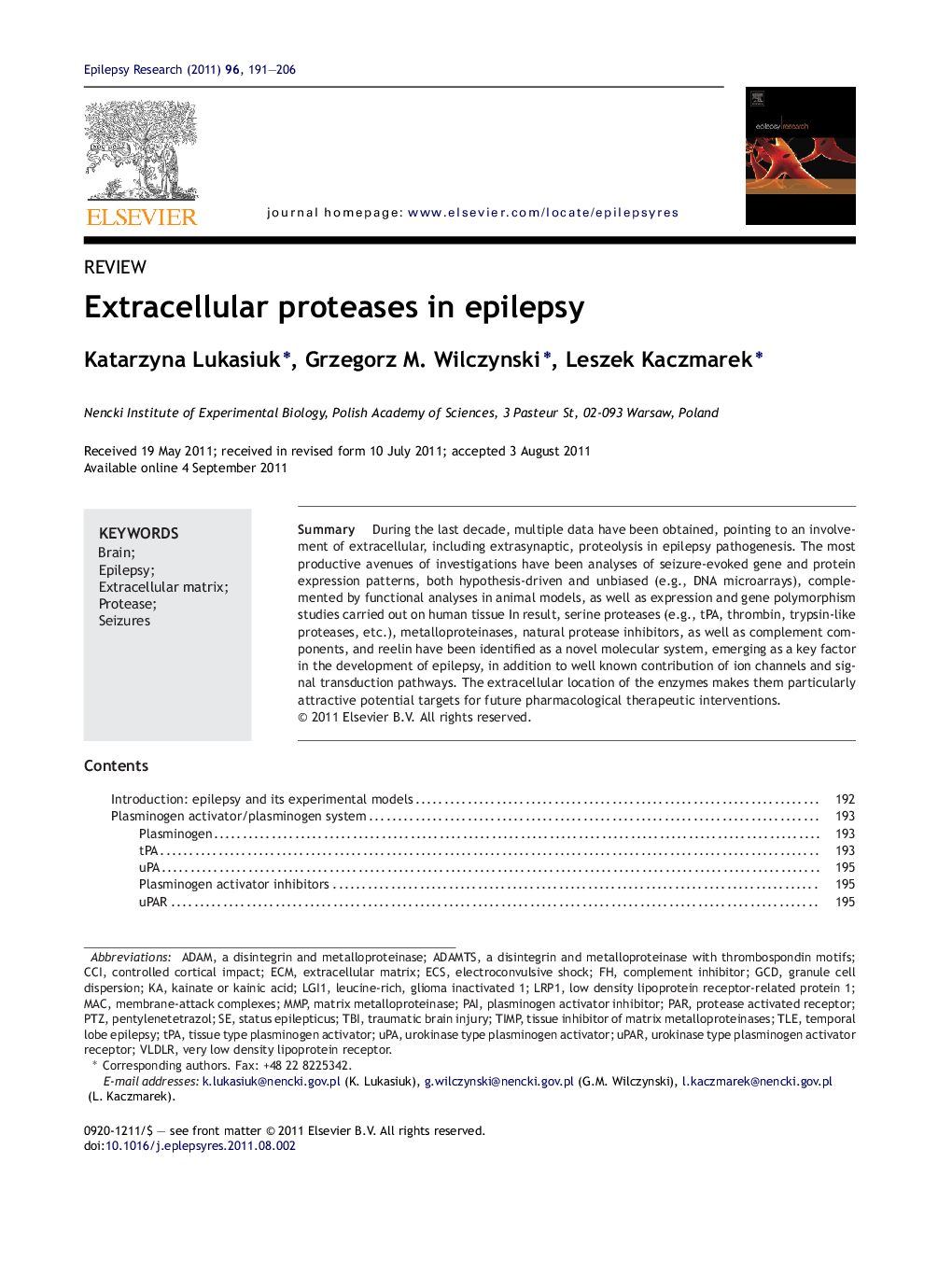| Article ID | Journal | Published Year | Pages | File Type |
|---|---|---|---|---|
| 3052342 | Epilepsy Research | 2011 | 16 Pages |
Abstract
During the last decade, multiple data have been obtained, pointing to an involvement of extracellular, including extrasynaptic, proteolysis in epilepsy pathogenesis. The most productive avenues of investigations have been analyses of seizure-evoked gene and protein expression patterns, both hypothesis-driven and unbiased (e.g., DNA microarrays), complemented by functional analyses in animal models, as well as expression and gene polymorphism studies carried out on human tissue In result, serine proteases (e.g., tPA, thrombin, trypsin-like proteases, etc.), metalloproteinases, natural protease inhibitors, as well as complement components, and reelin have been identified as a novel molecular system, emerging as a key factor in the development of epilepsy, in addition to well known contribution of ion channels and signal transduction pathways. The extracellular location of the enzymes makes them particularly attractive potential targets for future pharmacological therapeutic interventions.
Keywords
TLEADAMTSuPARuPALRP1LGI1CCIGCDPTZECMMMPtPATBIECsVLDLRADAMTraumatic brain injuryPAIplasminogen activator inhibitorstatus epilepticusEpilepsya disintegrin and metalloproteinasea disintegrin and metalloproteinase with thrombospondin motifsSeizuresParTIMPelectroconvulsive shocktemporal lobe epilepsyurokinase type plasminogen activatorExtracellular matrixmatrix metalloproteinaseBraintissue inhibitor of matrix metalloproteinasesComplement inhibitorMACtissue type plasminogen activatorgranule cell dispersionProteaseprotease activated receptorLow density lipoprotein receptor-related protein 1pentylenetetrazolcontrolled cortical impactVery low density lipoprotein receptor
Related Topics
Life Sciences
Neuroscience
Neurology
Authors
Katarzyna Lukasiuk, Grzegorz M. Wilczynski, Leszek Kaczmarek,
